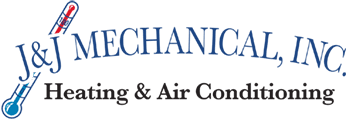Don’t Suffer Bad IAQ — Learn How to Improve the Quality of Your Air
The quality of indoor air is one of our most precious commodities. Bad IAQ can lead to a number of respiratory problems and is especially difficult on people who suffer from ailments like asthma and allergies. Let’s take a look at some facts concerning indoor air quality and what you can do to protect your loved ones by making improvements in your North Carolina home.
A 3-Step Plan to Improving Indoor Air Quality
There are a number of techniques that can improve the indoor air quality of your home, but the best way to see fast results is to use this 3-step plan:
- Increase ventilation – This can be somewhat tricky. There’s a myth that all you need to do to increase ventilation is to open a window and let some air in. Unfortunately, in most areas, the air you let in can contain by-products of emissions produced by automobiles and industrial pollution. Because of this, you need to use trickle ventilation, which is the installation of a 10-inch high screen with extra filters.
- Use the A/C – When it’s warm outside, running the A/C will help remove water-soluble pollutants from the air, thereby improving the air quality. This will also remove pollen and various particulates.
- Install a HEPA filter – High-efficiency particulate air (HEPA) filters are extremely effective in extracting harmful pollutants from the air. An alternative is to use a stand-alone HEPA air cleaner, but keep in mind that each of these cleaners will only be effective in a single room.
Get Rid of Those Pesky Dust Mites
You might not want to think about it, but the truth is that dust mites are everywhere. They’re often stirred into the air when you vacuum, walk across the carpet or move around in bedding. These microscopic creatures are the number one cause of allergies from house dust, which means removing them is essential. The good news is that there are a few ways to help fight against dust mites and rid of your home of their contribution toward bad IAQ:
- Avoid the use of a humidifier – Dust mites don’t get along well in dry air, so it’s best to keep your home around 30 or 35 percent humidity. Because of this, the last thing you want to do is use a humidifier if you have allergies, especially in the bedroom.
- Run the A/C – In addition to the aforementioned benefits of operating the A/C to combat bad IAQ, doing so will also drastically decrease the number of dust mites in the air.
- Replace carpet with laminate or tile – Your carpet serves as a great breeding ground for dust mites, so if possible, switch it out with laminate flooring or tile, which won’t hold in pollutants and are easier to clean.
- Target the bed – Dust mites are most common in bedrooms. To protect your health, cover mattresses and pillows with impermeable covers to keep them away. And be sure to wash bedding once a week in hot water.
- Dust often — Dust on a regular basis to lower the number of dust mites in your home. Use either a damp rag or microfiber cloth to avoid spreading the dust mites around.
Avoiding Pet Dander
Here’s another big problem for people suffering from allergies and asthma. While we would never suggest getting rid of your pets, you should take precautions to lower the amount of pet dander in the air. First, bathe them regularly to reduce the amount of allergens that they release into the air. Getting rid of your carpet where pet dander and hair will often reside is another solid strategy. And finally, if it’s an indoor pet, try to keep it out of your bedroom, where most of us spend up to eight hours or more of our day.
Removing VOCs
This is one element of bad IAQ that can sometimes get overlooked. Volatile organic compounds, or VOCs, are found in a number of products that many people use on a daily basis. These include cleaners, paints, floor polishes and more, which often include irritating chemicals like ammonia and chlorine. The best way to avoid these pollutants is to switch to organic methods, whether homemade or found at your local store.
For more expert advice on how to improve bad IAQ, or if you have any other questions about home comfort, contact the professionals at J & J Mechanical. We’ve been serving the needs of Greenville, Kinston, New Bern and surrounding areas since 1988.

